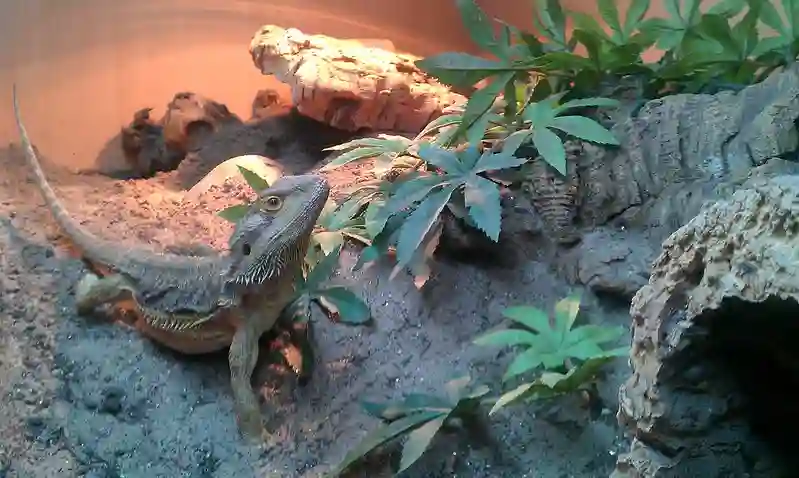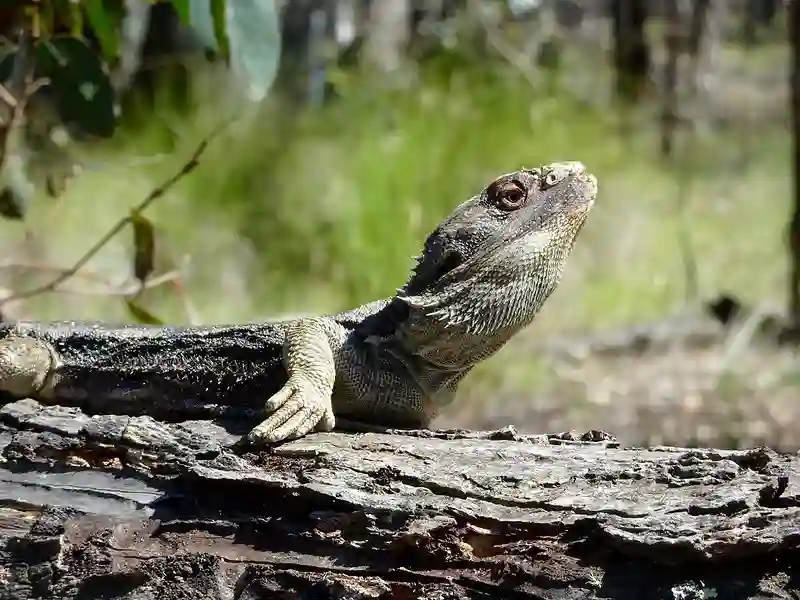Yes, bearded dragons can eat watercress, but it should be fed in moderation. Watercress is an aquatic plant that is high in vitamins and minerals, including calcium, which is essential for bearded dragons’ growth and health.
Watercress also contains oxalates, which can bind to calcium and prevent its absorption, leading to metabolic bone disease.
It is recommended to feed watercress only as an occasional green.
To prepare watercress for bearded dragons, it should be washed thoroughly to remove any dirt or debris.
It can be offered raw or lightly steamed. It is important not to overfeed bearded dragons, as they have small stomachs.
Nutritional Benefits Of Watercress For Bearded Dragons

Watercress is a highly nutritious vegetable that is rich in vitamins, minerals, and antioxidants.
It contains high levels of vitamin C, vitamin K, calcium, and iron, which are essential for maintaining the overall health of bearded dragons.
The high nutrient content of watercress makes it an excellent addition to their diet as it can help promote digestive health and boost their immune system.
Besides its nutritional benefits, watercress can also have positive effects on the skin health of bearded dragons.
Watercress has been shown to contain compounds that can help reduce inflammation and improve skin health.
Incorporating watercress into the diet of bearded dragons may help promote healthy skin and prevent common skin issues such as dryness and shedding problems.
Are There Any Risks Associated With Feeding Watercress To Bearded Dragons?
Feeding bearded dragons with watercress is a popular choice for reptile owners due to its high nutrient content.
This aquatic plant is loaded with vitamins A, C, and K, as well as minerals like calcium, iron, and magnesium.
It has a high water content that helps keep the hydration level of these lizards in check.
There are potential hazards associated with feeding watercress to bearded dragons that require careful consideration.
One of the primary concerns when feeding watercress to bearded dragons is the risk of digestive issues.
Watercress contains oxalates which can bind with calcium and other minerals in the gut, leading to mineral imbalances and even metabolic bone disease if consumed in excessive amounts.
There are alternative greens like collard greens or mustard greens that offer similar nutritional benefits without presenting the same risks.
How Often Watercress Should Be Offered To Bearded Dragons?
While watercress is a safe vegetable for bearded dragons to consume, there are certain risks associated with feeding it in large quantities.
Watercress contains high levels of calcium and oxalates, which can lead to the formation of kidney stones in bearded dragons if consumed excessively.
Therefore, it is recommended to offer watercress as an occasional treat rather than a staple food item.
The frequency at which watercress should be offered to bearded dragons depends on their age and dietary requirements.
Adult bearded dragons can have watercress once or twice a month, while juveniles can have it once every two weeks.
It is important to note that watercress should not make up more than 10% of the overall diet.
If you are unable to find fresh watercress, frozen or freeze-dried options may also be used as alternatives.
Before feeding any type of greens to your bearded dragon, it is important to wash them thoroughly and remove any stems or leaves that may be difficult for them to digest.
How To Feed a bearded dragon Watercress?
The process is actually pretty simple. All you need to do is wash the watercress thoroughly and chop it up into small bite-sized pieces. Then, mix it in with your bearded dragon’s regular greens or vegetables.
Be sure not to overdo it though – watercress should only make up a small portion of your beardie’s diet. It’s important to offer a variety of different foods to ensure they are getting all the nutrients they need. And as always, make sure your bearded dragon has access to fresh water at all times.
Feeding watercress to bearded dragons can provide a multitude of health benefits.
This leafy green vegetable is high in calcium, which is essential for maintaining strong bones and preventing metabolic bone disease in reptiles.
Watercress is also rich in vitamin A, a crucial nutrient for maintaining healthy skin and eye function.
It is important to properly prepare and serve watercress to ensure that it does not pose any health risks to your bearded dragon.
Alternative greens such as collard greens, mustard greens, and dandelion greens can also be offered as a variety in your pet’s diet.
Lastly, cooking options such as steaming or boiling can help break down the tough fibers in watercress and make it easier for your bearded dragon to digest.
How To Store Watercress Properly For Your Beardie?
Watercress is a nutritious leafy green that can be included in the diet of bearded dragons.
It is rich in vitamins A and C, as well as calcium, which is essential for the health of these reptiles.
When feeding watercress to your beardie, it is important to consider the source and quality of the greens.
Organic or pesticide-free options are preferred, as they reduce the risk of harmful chemicals being ingested by your pet.
To ensure your beardie receives fresh and safe watercress, proper storage techniques should be implemented.
Storing watercress correctly will help extend its shelf life and prevent spoilage.
Refrigeration is recommended to slow down the process of decay and prevent bacterial growth.
Here are some tips on how to store watercress properly for your beardie:
- Remove any rubber bands or ties from the bunch before storing
- Place the unwashed leaves in a plastic container lined with paper towels to absorb moisture
- Avoid overcrowding by leaving enough space for air circulation
- Check regularly for signs of spoilage or mold
Container options can vary depending on preference; plastic containers with tight-fitting lids are often preferred as they provide a barrier against moisture and air exposure.
Moisture control is crucial when storing watercress since excess moisture can lead to rotting and wilting.
With proper storage techniques, you can ensure that your beardie receives fresh and nutritious watercress every time you feed it.
